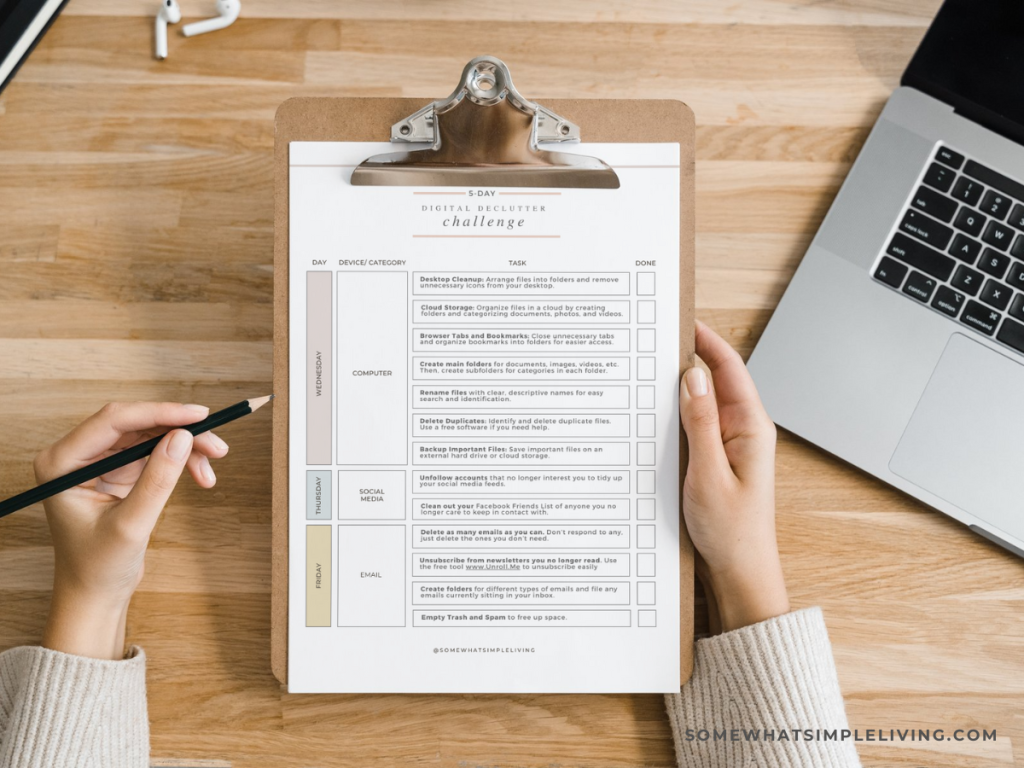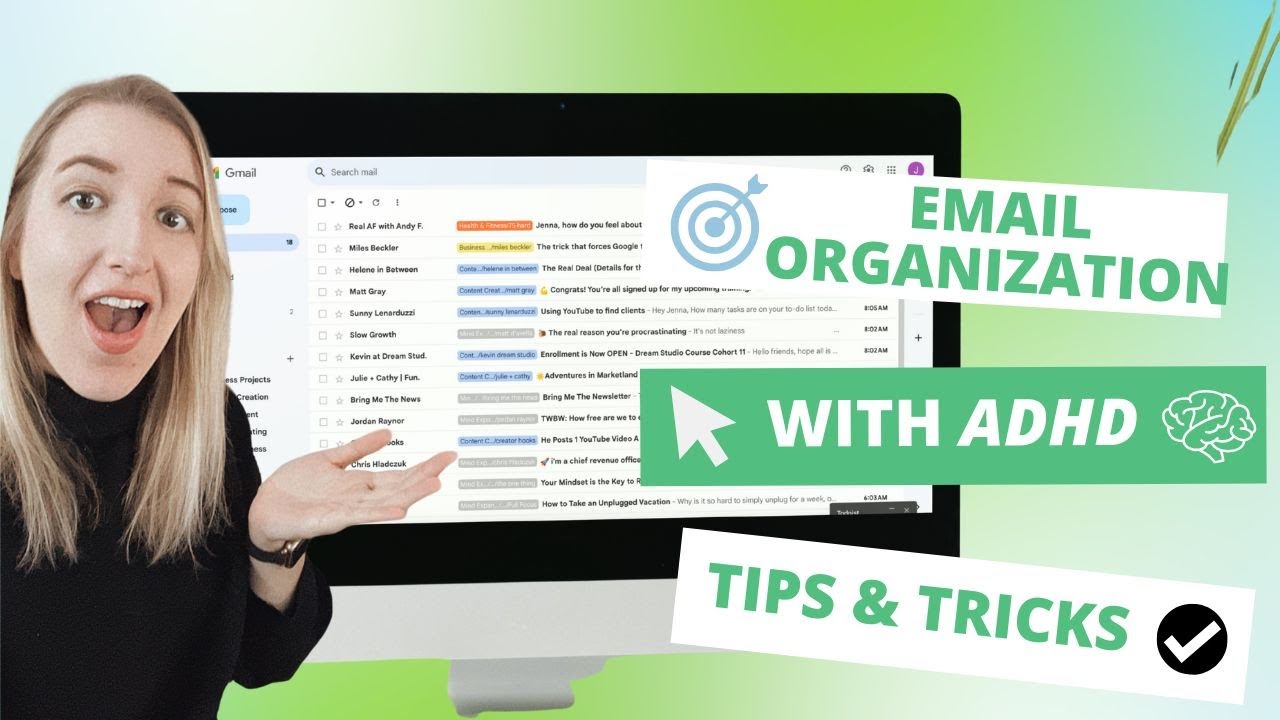The Impact of Detachment on Productivity: How an Organized Space Can Increase Your Efficiency

Understanding the Importance of Detachment in Productivity
In a world filled with constant notifications and competing priorities, the art of detachment has emerged as a crucial factor in enhancing productivity. Having an organized workspace does not merely contribute to aesthetics; it fundamentally transforms the quality of our work by eliminating distractions. By creating a focused environment, individuals can dedicate their full attention to high-priority tasks, ultimately unlocking their potential for creativity and efficiency.
One might wonder how organization directly correlates with productivity. The answer lies in several compelling benefits that a well-structured workspace provides, which include:
- Reduced Clutter: A tidy workspace minimizes visual distractions. Research indicates that our brains can only process a limited amount of information at once. When our environment is cluttered, it taxes our cognitive load, leading to decreased productivity. For instance, a study conducted by the Princeton University Neuroscience Institute found that people working in organized spaces could concentrate more effectively compared to those in chaotic settings.
- Enhanced Focus: Less chaos leads to improved concentration on tasks. This is particularly important in the United States, where many industries value efficiency. With the rise of remote work, employees have the opportunity to craft their environments; those who have taken the time to declutter often report heightened focus and better performance on projects.
- Increased Motivation: A clean environment can inspire you to take action. The psychology behind a neat workspace suggests that motivation can be significantly enhanced by the simple act of decluttering. Take, for example, a minimalist desk setup. It is more than just aesthetically pleasing; it serves to remind individuals of their goals and priorities.
The repercussions of a well-organized environment extend beyond mere aesthetics and motivation. Numerous studies highlight how a decluttered space impacts mental health and overall efficiency:
- Improved Mental Health: A clean space can reduce stress levels. Psychological studies have shown that clutter can lead to anxiety and feelings of being overwhelmed, particularly when working from home, where boundaries blur between personal and professional lives.
- Greater Efficiency: Tasks can be completed faster with fewer interruptions. When everything is in its designated place, it eliminates the time wasted searching for misplaced items. For instance, establishing designated storage solutions can lead to a more fluid workflow.
- Better Time Management: Finding necessary items is quicker and easier. With a systematic approach to organizing, individuals can navigate their tasks and responsibilities without the unnecessary friction caused by disorganization.
As we investigate the intricate connection between organization and productivity, it becomes clear that the design of our physical spaces plays a pivotal role in influencing our outputs. Strategies to enhance organization can range from simple decluttering exercises to the implementation of advanced organizational systems. By embedding these practices into daily routines, one can create an atmosphere that not only increases productivity but also nurtures well-being. In the evolving landscape of work in the United States, fostering such environments can lead to a significant cultural shift that values productivity as much as mental health.
DISCOVER MORE: Click here for digital decluttering tips

Creating a Foundation for Productivity Through Organization
The relationship between organization and productivity is deep-rooted and multifaceted, revealing how a structured environment can catalyze efficiency in various settings. It is crucial to recognize that detachment goes beyond merely decluttering; it is about creating a workspace that inspires focus and innovation. To effectively harness the benefits of an organized space, one must first identify the key elements that contribute to a productive environment.
One major aspect to consider is the layout of the workspace. Various studies have shown that thoughtful arrangements can significantly impact workflow. For example, placing commonly used items within arm’s reach minimizes unnecessary movements and increases the overall speed at which tasks are completed. Employees in office environments who personalized their desk space often reported improved engagement and satisfaction. In addition, robust command over one’s immediate surroundings translates into reduced distractions from coworkers and external stimuli.
Another critical factor is digital organization. In today’s tech-savvy age, clutter transcends physical items. Digital clutter—from overflowing email inboxes to a disorganized desktop—can foster distraction and overwhelm. According to a 2021 study by the National Institute for Occupational Safety and Health, workers spend an average of 28% of their week managing emails alone, often leading to a decrease in efficiency. By implementing organizational tools such as clean inbox protocols, digital filing systems, and project management software, individuals can greatly enhance their focus and productivity.
Additionally, the impact of consistency cannot be underestimated. By establishing routines that prioritize organization, individuals can cultivate a work habit that minimizes stress and maximizes output. Consider the following strategies that can help maintain a well-organized environment:
- Implement the ‘One In, One Out’ Rule: For every new item you introduce into your workspace, remove an existing one. This approach helps maintain balance and discourage accumulation.
- Establish a Daily Declutter Ritual: Spend the last five minutes of your workday organizing and tidying up your space. Doing so encourages a fresh start the following day.
- Prioritize the ‘Essentialism’ Approach: Focus on what truly matters by continuously assessing tasks and items in your space. Remove anything that does not serve your current goals or contribute to your productivity.
The practical implications of these organizational strategies extend to both mental and physical wellbeing. Not only do they support a more focused approach to tasks, but they also foster a sense of control and responsibility over one’s work environment. In the increasingly competitive landscape of the United States, where professionals are striving for greater efficiency, enhancing productivity through organization can yield a significant competitive advantage.
As we delve deeper into the connection between organized spaces and productivity, it becomes evident that the pathway to increased efficiency is rooted in effective detachment practices. By embracing these principles, individuals can transform not only their workspaces but also their overall engagement with their professional responsibilities.
| Advantages of an Organized Space | Impacts on Productivity |
|---|---|
| Reduces Stress | A decluttered environment promotes a calm mindset, allowing individuals to focus better on tasks at hand. |
| Enhances Focus | An organized workspace minimizes distractions, enhancing concentration and enabling deeper work sessions. |
| Encourages Creativity | A tidy space inspires innovation by allowing for a free flow of ideas without the burden of clutter. |
| Improves Time Management | An organized space allows for easier access to needed tools, reducing time spent searching for items. |
Organizing one’s workspace is imperative when examining the broader effects of detachment on productivity. An organized environment does not simply represent neatness; it plays a significant role in enhancing performance and efficiency. For instance, the connection between stress reduction and a tidy workspace is well-documented. When individuals are enveloped in chaos, it can heighten their anxiety, thus detracting from their focus. Conversely, a peaceful and tidy workspace fosters a sense of control, helping to maintain a level of calm even in high-pressure situations.Moreover, the impact of organization on creativity is profound. Clean spaces allow ideas to flourish, free from the clashing distractions that clutter can impose. Tools and resources easily located empower individuals to act swiftly, heightening their sense of accomplishment. Ultimately, the alignment of physical space with mental clarity emerges as a pivotal strategy for achieving efficient outputs, allowing both well-being and productivity to thrive in tandem. Exploring methods to achieve that organization is essential for all looking to elevate their efficiency.
DISCOVER MORE: Click here to transform your space
The Role of Mental Clarity in Enhancing Productivity
While the physical aspects of organization are vital, mental clarity plays an equally important role in productivity. The psychological burden of clutter—whether it be overwhelmed thoughts or visible disarray—can hinder focus and lead to decision fatigue. A study published in the journal Psychological Science indicates that individuals working in organized environments demonstrate improved cognitive function, leading to better decision-making and task completion. This suggests that a clean slate can do wonders not only for efficiency but also for overall mental agility.
One can achieve this mental clarity through the practice of mindfulness. Engaging in mindfulness techniques, such as meditation or even short, focused breaks, allows individuals to reset and prioritize their tasks. A survey conducted by the American Psychological Association found that employees who practiced mindfulness reported a 32% increase in focus, less stress, and a 25% improvement in overall well-being. These figures illuminate the importance of combining organizational strategies with mental practices, emphasizing that detachment from the cluttered mind is just as essential as detaching from material distractions.
Furthermore, environmental design can contribute to mental clarity. A workspace that incorporates natural light, greenery, and personal touches can stimulate creativity and restfulness. Research by the Royal College of Surgeons in Ireland found that employees with access to green spaces reported a higher sense of well-being and job satisfaction. This is indicative of how a well-curated space can not only maximize productivity but also enhance happiness and engagement in the workplace.
Another innovative approach to bolstering productivity through detachment is the concept of time-blocking. Time-blocking involves allocating specific blocks of time to various tasks, allowing individuals to focus on one thing at a time without the pressure of multitasking. This technique can also help practitioners detach from their slew of responsibilities, breaking them down into manageable tasks. According to a study by the Harvard Business Review, individuals who implemented time-blocking saw a 25% increase in their productivity levels, demonstrating that structured focus is essential in today’s fast-paced work environment.
- Utilize Visualization Techniques: Create a map of tasks for the day or week. Visualizing tasks not only helps prioritize effectively but detaches individuals from the chaos of overwhelming to-do lists.
- Establish a ‘Work Zone’: Designating a specific area purely for work promotes a mental association with productivity and can facilitate quicker transitions into focused work sessions.
- Integrate Technology Wisely: Use apps and tools designed to streamline work processes, but practice digital detachment by limiting notifications and scheduled times for checking updates.
These techniques echo a broader trend in workplace design trends across the United States, where organizations are increasingly investing in mental health and productivity resources. Corporations that create spaces that embody these principles see not just increased productivity but also reduced employee turnover, as a harmonious environment fosters loyalty and resilience.
In summary, the amalgamation of organizational strategies and mental clarity culminates in a holistic approach to productivity. With the right practices in place, individuals can leverage their environments to cultivate both efficiency and satisfaction in their professional lives.
DISCOVER MORE: Click here for insights on minimalism in interior design
Conclusion
In conclusion, the synergy between detachment from material distractions and the establishment of an organized workspace significantly enhances productivity across various domains. The physical freedom afforded by a decluttered environment allows employees to focus more intently on their tasks while simultaneously alleviating the burden of mental clutter. As explored throughout this article, mental clarity and an organized space are intricately linked to heightened cognitive function, better decision-making, and an overall increase in efficiency.
Moreover, implementing strategies such as mindfulness practices and time-blocking can cultivate a work atmosphere that not only promotes productivity but fosters a sense of well-being. The benefits of these approaches are supported by substantial research, indicating that organizations that prioritize these elements see reduced employee turnover and heightened job satisfaction. According to studies, investing in green spaces and personalized work areas can yield considerable dividends in terms of employee engagement and happiness, further reinforcing the notion that a holistic workspace design directly correlates with productivity.
As we move towards a future increasingly defined by flexibility and remote work, understanding the impact of detachment on productivity becomes all the more crucial. By creating environments that nurture mental agility and focus, individuals and organizations alike can realize exceptional results. Ultimately, the key is to strike a balance between physical organization and mental clarity, leading not only to improved efficiency but also to a more fulfilling work experience.


